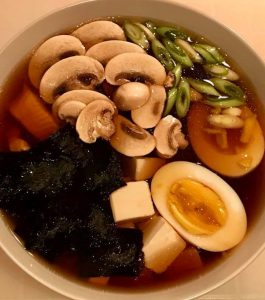You can eat sushi if you have a seafood allergy. If I had a seafood allergy I would make the sushi restaurant aware of that too, even though I ordered food that did not contain seafood. There are several reasons for this.
It is quite important that if you have some kind of allergy, then the food you have ordered should not have been in contact with a cutting board or another kitchen utensil where an allergenic raw material has been in contact. Otherwise you may risk a reaction as well, even if a sushi knife has only touched the raw material.
As a sushi chef, it is extremely important that you are told if a guest has an allergy so that you can take it into account when preparing food. There is no one who wants one’s guests to have a bad dining experience.
To be 100% sure, you should always inform the sushi restaurant if you have an allergy.
Read more about Sushi course for beginners
_
Zoë has lectured and held sushi courses for A. P. Moller – Maersk, Hugo Boss Nordic, Novo Nordisk, Novartis, Velux, Gorrissen Federspiel, Beierholm revision, Elbek & Vejrup and many more.







